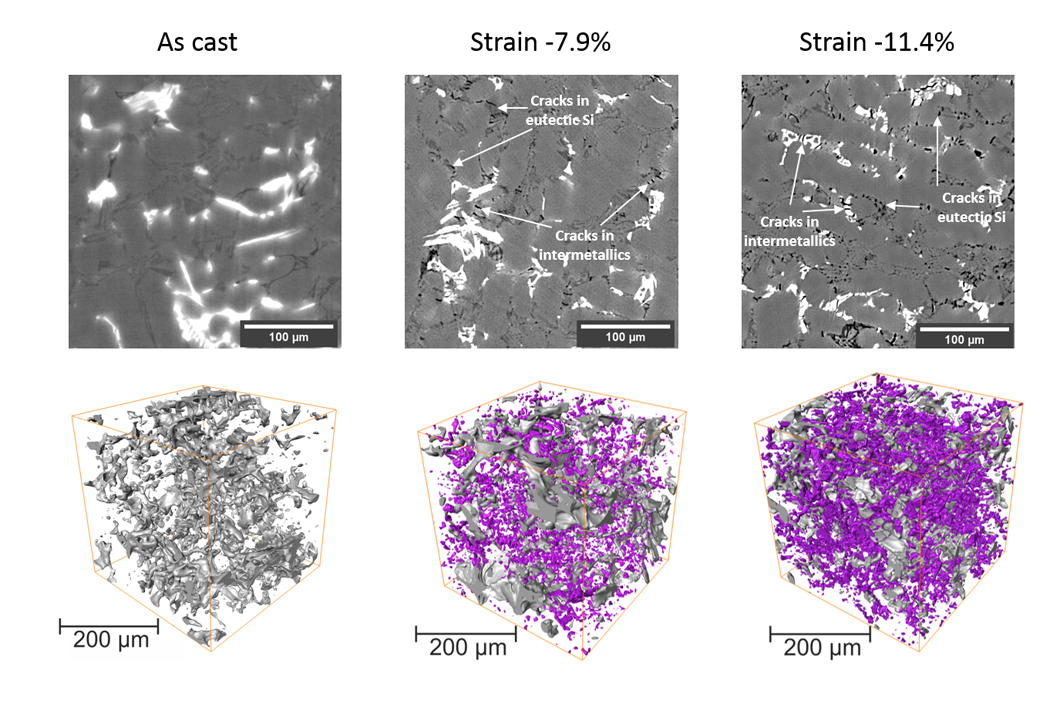
Reconstructed CT slices of AlSi12CuMgNi alloy in as cast condition and after pre-strain and 3D rendering of segmented intermetallics (gray) and microcracks (magenta).
Source: BAM, Division Micro Non-Destructive Testing
Near eutectic cast Al–Si alloys are the basis of all Al-alloys used for combustion engines, due to their high fluidity during casting and relatively high strength-to-weight ratio at elevated temperature. The microstructure of binary eutectic Al-Si alloys is characterized by the presence of stiff eutectic-Si embedded in an age hardenable Al matrix. Under mechanical load, the eutectic Si usually shares part of the load with the aluminum matrix. However, during solution heat treatment or operation at elevated temperature, the eutectic Si network undergoes a process of spheroidisation that results in its gradual disintegration. As a consequence, the initially highly interconnected 3D Si scaffold transforms into individual spheroids with lower load bearing capability, and the strength of the alloys decreases. This disintegration of the Si network can be overcome by the addition of transition elements such as Cu, Mg or Ni, which lead to formation of stiff intermetallic (IM) phases.
In this paper we investigated the effect of those IM on mechanical properties of the Al-Si alloy. We used a powerful combination of advanced techniques such as in-situ neutron diffraction (ND) for internal stress analysis and synchrotron X-ray computed tomography (CT) for 3D microstructural characterization. In-situ ND measurements of the alloy under uniaxial compression helped to reveal that both IM and Si phases carry a substantial part of the applied load. However, after reaching a critical load, microcracking destroys the interconnectivity of the network, which then transfers the load back to the Al matrix, inducing further plastic deformation in it. Thanks to CT, the damage in all phases was quantified. Despite the fact that after cracking of the reinforcing phases load is transferred back to the plastically deformed Al matrix, no damage initiation was observed in it. To explain this unexpected behavior, and predict phase specific stress values, an analytical micromechanical model was developed, which incorporates the information on the 3D microstructure and on damage. For the first time, IM phases were considered in an analytical model of Al alloys. The model shows that both radial and axial stress components of the Al phase are always compressive during the in-situ diffraction compression experiments, which explains the absence of local damage in the Al phase.
The role of intermetallics in stress partitioning and damage evolution of AlSi12CuMgNi alloy
Sergei Evsevleev, Tatiana Mishurova, Sandra Cabeza, R. Koos, I. Sevostianov, G. Garces, G. Requena, R. Fernández, Giovanni Bruno
Materials Science & Engineering A, 2018, Volume 736, Pages 453-464
BAM Department Non-Destructive Testing, Division Micro Non-Destructive Testing


